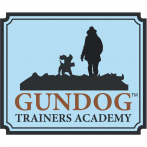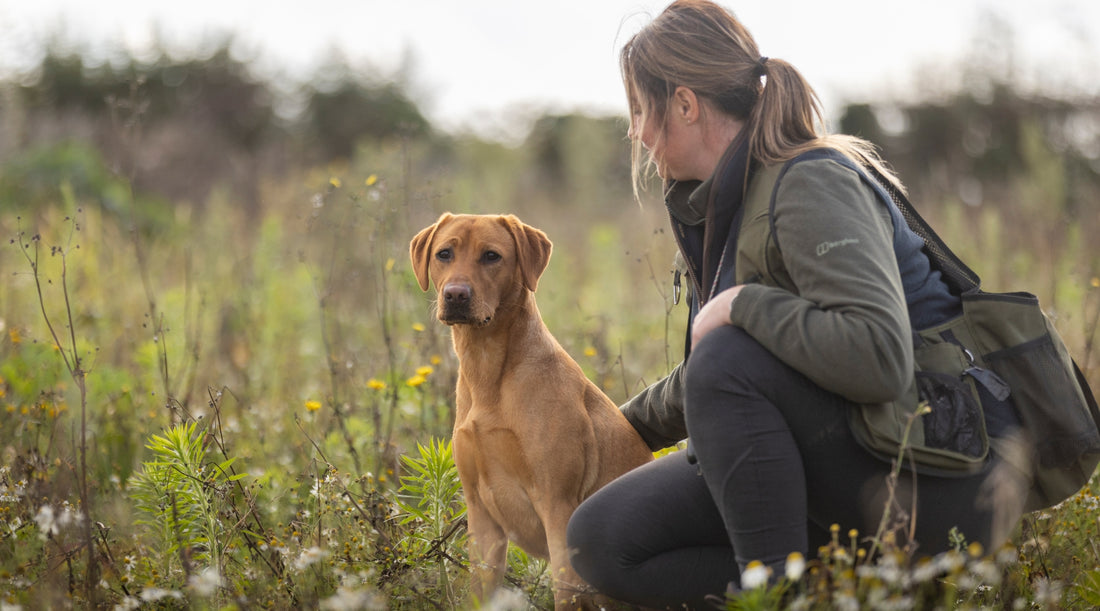If your New Year’s resolution was to improve your gundog training in 2024, then you’re in the right place.
As the festive season winds down and the shooting season approaches its 1st February finale, now is the perfect time to take a step back, assess where you’re at with your gundog, and set some fresh training goals for 2024.
You might be looking to kickstart your training. Maybe you’ve got a new puppy or dog to work with. Perhaps life has finally got a little less busy, and you’re ready to take your gundog training off the back burner. Or maybe you’re looking for a new dog sport and hobby to explore with your retriever, spaniel or HPR.
If you’re a seasoned gundog owner, you might be coming to the end of the shooting season. Over the last few weeks, you’ll probably have been making mental notes of your dog’s weak areas, or you might have noted certain behaviours where the wheels are starting to fall off.
Whether you’re just getting started or looking to sharpen your stop whistle, we understand that the start of the new year brings an air of optimism and a fresh dose of motivation.
To help you make the most of this, in this month’s blog, we look at some top tips for planning successful training sessions and setting goals, plus how to assess your gundog’s progress.
Finally, if your number one goal for 2024 is to perfect your retrieve chain and delivery to hand, we have a bonus treat for you.

How to plan your gundog training sessions
If you fail to prepare, you’ll essentially be preparing to fail.
When training our dogs, we all want our sessions to be productive and successful and feel like a good use of our often limited time.
And yet we have all been guilty of wandering into a field or a training area, with every intention of ‘doing some gundog training’ and absolutely no plan as to what this will look like.
What usually happens next is one of more of the following:
- You set up an exercise or drill without any forethought and then have to watch it go horribly wrong.
- You default to practising exercises that your dog is already good at and don’t make any progress in the areas you actually want to work on.
- You draw a blank, have no idea what to do, give up on training and send your dog off to have some more free time.
Our most productive and successful gundog training sessions have always been planned before leaving the house. But how exactly should you go about planning?

Setting realistic gundog training goals
Before we go any further, you need to put some time aside to work out your long-term goals for you and your dog.
This might be a desire to go beating or picking up on your local shoot, or you might want to take your Gundog Club grades, or compete with your dog in working tests and field trials.
The achievement of these long-term goals might be a few years away. They do not have to be set in stone and can be changed anytime, but they will help you stay on track.
Once you have set your goals, you can consider what you will need from your dog.
Look at the different skills required of a gundog working at the same level as your long-term goal, and consider what’s needed, of you as a handler and your dog, to obtain that final cued behaviour under “stimulus control”.
You can use this list to reflect on where you’re at right now and what level you would like your gundog to be working at in 12 months. Finally, you will have a good idea of which behaviours you need to prioritise, and this will help give your training sessions some clear focus.
If you’ve got a puppy, your goal for the year might be to build solid foundations like a reliable recall, delivery to hand or some basic steadiness.
If your dog is older and you want to work them, you might aim to get them shoot-ready by September. Your goal for the year might be to proof your foundation behaviours so that they stand a chance in the highly exciting and distracting environment that is the shooting field.
If you’ve been beating or picking up all season, you might be seeing some cracks form, and you might have a list of behaviours that need some work and improvement.
Ideally, any goals you set should be SMART - Specific, Measurable, Achievable, Relevant, and Time-bound. For instance, "I want to teach my dog to walk at heel off lead for 50 yards in the next six months”. Or, “I want my dog to automatically stop to shot by the 1 October”.

Why you need to keep training records
Record keeping will be unique to you. Some people like to do storyboards or charts, others like spreadsheets, notes on their phone, or keep a dedicated paper notebook.
Whatever method you choose needs to be simple, straightforward and accessible to you. There is little point in starting a fresh notebook if you’re likely to forget it and leave it at home when you go out training. A spreadsheet will not work in the long term if you hate computers.
Before you go out training, you will use this space to write down what you will do in your session. That way, you will not end up in a field without a basic plan in place.
Then, after or during your training session, you can note what worked and what didn’t. This will help you monitor progress and make informed adjustments to your training plan throughout the year.
Keeping records will also help you to be more aware of the number of repetitions you are asking of your dog.
Try any repetitive task over a period of time, and it doesn’t matter how much you enjoy it, your performance will deteriorate as you tire and/or lose focus.
If you can make notes before training, you have the opportunity to plan the progression of your session so you are ready to move on as needed. This will help you avoid doing too many repetitions at the same level and not moving forward, which ultimately causes dogs to lose interest and/or become frustrated.
Part of being an effective trainer is to reflect on your sessions to identify what needs to be done next to make progress. This means you must be very observant of your dog, the environment and yourself.
Get into a good habit of making notes straight after your training session - do not be tempted to leave it until you get home or the next day, as your memory will not be as fresh.
This might seem like a lot of extra work alongside the actual training of the dog, but it is the work done beforehand that makes a successful training session run so well.

Bonus: Is one of your goals to teach your gundog to love retrieving and always deliver to hand in 2024?
If one of your 2024 New Year’s resolutions is to transform your gundog into one which loves to fetch and delivers to hand every time, we have a special invitation for you.
Whether you have a retriever, spaniel or HPR breed, the quintessence of gundog work lies in retrieving, with an emphasis that the “article is delivered tenderly to hand”.
In a shooting context, the ‘article’ is a game bird, or hare/rabbit, which will later be prepared and cooked for the table, so it needs to be managed with care so as not to cause any damage.
There is also an ethical consideration that the quarry may be injured and should be returned to the handler for quick, humane despatch.
With this in mind, when a gundog is reluctant to retrieve or unable to deliver to hand, it can be disheartening for the owner.
If you are just starting with a puppy, have a gundog which has always struggled with the retrieve chain, or are looking to tidy up your hand delivery after a busy shooting season, we invite you to join us at our upcoming Force-Free Fetch masterclass.
We are presenting a step-by-step guide to help you achieve a reliable, force-free fetch delivery, followed by a live Q&A session in our Facebook group Gundog Training Solutions, at 18:30 GMT on Tuesday, 30 January 2024.
The training session and Q&A are free to access for group members. Not part of Gundog Training Solutions? Click here to join today.
📸 All photographs credit to Alice Loder Photography

